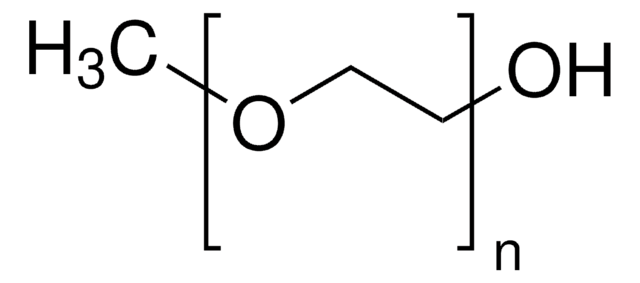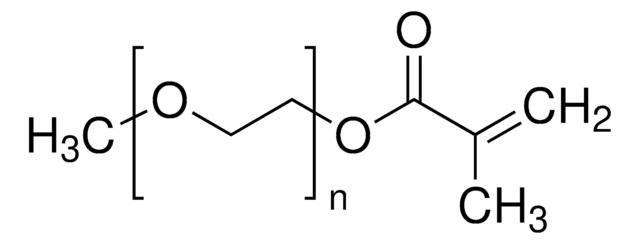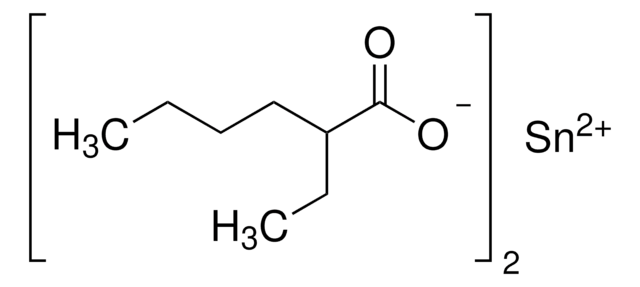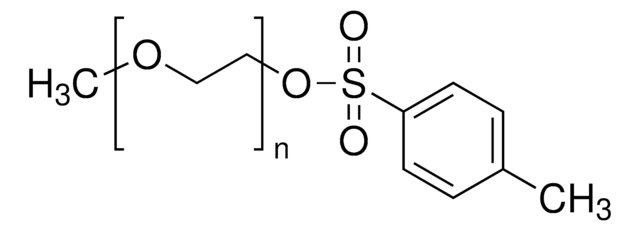Kluczowe dokumenty
202509
Poly(ethylene glycol) methyl ether
average Mn 2,000, methoxy, hydroxyl
Synonim(y):
Polyethylene glycol, Methoxy poly(ethylene glycol), Polyethylene glycol monomethyl ether, mPEG
About This Item
Polecane produkty
Nazwa produktu
Poly(ethylene glycol) methyl ether, average Mn ~2,000
gęstość pary
>1 (vs air)
Poziom jakości
ciśnienie pary
0.05 mmHg ( 20 °C)
Formularz
flakes (or pellets)
masa cząsteczkowa
average Mn ~2,000
lepkość
54.6 cSt(210 °F)(lit.)
temp. przejścia
Tm 52 °C
grupa funkcyjna
hydroxyl
ciąg SMILES
O(CCO)C
InChI
1S/C3H8O2/c1-5-3-2-4/h4H,2-3H2,1H3
Klucz InChI
XNWFRZJHXBZDAG-UHFFFAOYSA-N
Szukasz podobnych produktów? Odwiedź Przewodnik dotyczący porównywania produktów
Powiązane kategorie
Opis ogólny
Zastosowanie
It can be used as a pore-forming agent in the preparation of ultrafiltration membranes which are used in the removal of macromolecules.
It can also be used as a starting material in the preparation of a biodegradable amphiphilic copolymer of poly(L-alanine) with mPEG.
Cechy i korzyści
Kod klasy składowania
11 - Combustible Solids
Klasa zagrożenia wodnego (WGK)
WGK 1
Temperatura zapłonu (°F)
359.6 °F - closed cup
Temperatura zapłonu (°C)
182 °C - closed cup
Środki ochrony indywidualnej
Eyeshields, Gloves
Wybierz jedną z najnowszych wersji:
Masz już ten produkt?
Dokumenty związane z niedawno zakupionymi produktami zostały zamieszczone w Bibliotece dokumentów.
Klienci oglądali również te produkty
Produkty
Fouling Resistant Biomimetic Poly(Ethylene Glycol) Based Grafted Polymer Coatings
Nasz zespół naukowców ma doświadczenie we wszystkich obszarach badań, w tym w naukach przyrodniczych, materiałoznawstwie, syntezie chemicznej, chromatografii, analityce i wielu innych dziedzinach.
Skontaktuj się z zespołem ds. pomocy technicznej





